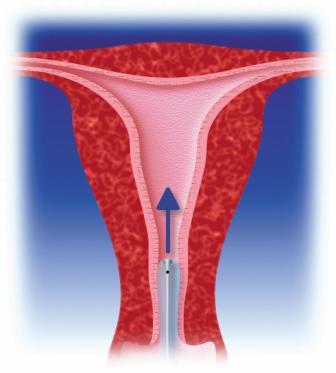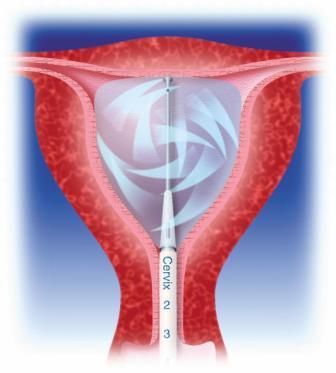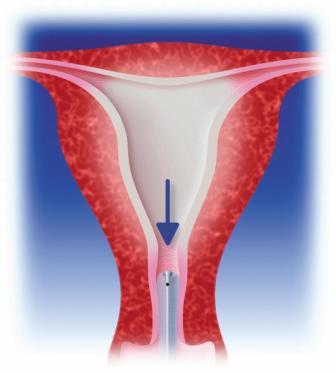Table of Content
Heavy periods
You have been living with your periods since you were a teenager. Flow intensity, duration and frequency have probably varied with time because every woman goes through hormonal changes. Normally periods occur approximately every 28 days – but period frequencies between 21 to 35 days are considered normal – and last between 1 and 5 days.
Are you affected by heavy, prolonged or irregular periods?
If this is the case, you are not alone. In fact 20% of women worldwide suffer from such excessive bleeding at some stage in their lives. This often occurs to women reaching their mid-thirties or early forties.
Why does it happen?
The inside of your womb has a lining called endometrium, which starts growing after each of your periods. This thickening of the endometrium is caused by hormonal activity; the inside of your womb is preparing for a possible pregnancy. After approximately 14 days an ovulation occurs. If the egg released by the ovaries is fertilized by a sperm it will implant into the endometrium, resulting in a pregnancy. If no pregnancy occurs, the endometrium will change during the second phase of the menstrual cycle and shed away, causing a period. Hormones have a significant impact on endometrial changes and periods. Other conditions, such as anomalies inside the womb or diseases can cause profuse bleeding.
How can you know whether your periods are normal or not?
Women affected by heavy periods commonly experience situations, such as:
- Periods lasting longer than 7 days, re-occurring each month
- Profuse vaginal bleeding making daily activities such as work difficult to manage or maintain
- Difficulty scheduling for social, leisure or holiday activities directly around monthly menstrual cycle
- Soaking several tampons or sanitary pads every hour
- Presence of blood clots in their menstrual flow
- Fearing or going through embarrassing incidents caused by excessive menstrual bleeding
- Feeling inhibited with their partner
- Feeling weak, tired, sad or irritated
- Severe pain or cramps during menstrual flow
- Experiencing menstrual cycles of less than 25 days
If you have experienced one or more of these conditions described above, your periods are heavier than they should be and they probably interfere with your usual activities. Your gynaecologist can propose durable solutions to get rid of heavy or irregular periods and help you to recover your quality of life.
Heading toward a solution
Your gynaecologist will conduct a thorough medical examination in order to diagnose the cause of your heavy periods. Appropriate treatment options will be offered to you upon the results of your examination.
If you are suffering from heavy periods, why should you wait and endure it? A visit to your gynaecologist will lead to relief and better quality of life.
What is Cavaterm™?
Cavaterm™ is a minimally invasive solution that durably reduces or even eliminates menstrual bleeding. It is a very safe and efficient method to treat excessive menstrual bleeding due to a hormonal imbalance or other functional disorders. Thousands of patients treated with Cavaterm™ since 1993 report excellent results causing significant improvements in their quality of life since they are no longer enduring heavy periods.
How does it work?
The inside of your womb has a lining called endometrium, which grows and then sheds off, causing bleeding. The Cavaterm™ treatment consists in eliminating the endometrium using a minimally invasive technique. A device equipped with a small balloon mounted on a tip is inserted vaginally into the womb (Picture 1), then inflated with a sterile fluid. Once filled, the balloon conforms to the cavity shape and lies against the endometrial lining, from which the bleeding originates. The fluid inside the balloon is gently heated for 10 minutes. The heat applied through the balloon safely coagulates the endometrial lining (Picture 2). This action will reduce or completely stop the bleeding. At the end of the treatment cycle, the balloon is deflated and the catheter removed from the uterus (Picture 3).
A method of choice
This treatment is free of hormones and requires no incisions. It is proven to be safe and effective. It will definitely be completed after a 10 minutes treatment cycle. Shortly after the treatment, the patient can go home and take a day to rest or return to normal activities if she feels like it.
Experience
Many thousands of patients have been successfully treated with Cavaterm™ since 1993. This method has shown safety and proven efficacy. In addition it is free of lasting side-effects.
What can you expect after the Cavaterm™ treatment?
What can you expect after the Cavaterm™ treatment?
- The purpose of this treatment is to reduce heavy periods. Normally lighter periods resume again 2 to 3 months after the treatment. However some patients may stop menstruating completely even though they are not yet in menopause.
- Light anaesthesia is required for the treatment. It will last only a few minutes and you will normally spend less than 30 minutes in the operation room.
- Depending on the type of anaesthesia used for the treatment, you may be discharged on the day of the treatment or the next
What else should you know?
- After the treatment, you will experience pain similar to strong menstrual cramps for approximately 2 to 4 hours. This discomfort will be treated with pain-relieving medication.
- Although recovery time is reported to be very short, it is advisable not to do any strenuous work following the treatment.
- Liquid vaginal discharge may occur following the treatment. There is nothing to be alarmed about, it is part of the healing process.
- You must not take a bath, go swimming, or have intercourse during the 2 weeks following the treatment. It is also advisable to use pads as protection, and not tampons.
- Cavaterm™ is free of hormones and does not affect your hormonal balance.
- Cavaterm™ should not be used for women who still desire to become pregnant. This procedure destroys the uterine lining, which should be intact in order to bring to term a normal pregnancy.
- On the other hand, Cavaterm™ does not guarantee sterility. Therefore, you will still need to use a reliable method of contraception.
If you have further questions, you may find answers in the FAQ section or contact us
Why choose Cavaterm™?
If you are indicated for a Cavaterm™ treatment, we want to draw your attention to relevant advantages and benefits:
Cavatern advantages and benefits, relief from heavy periods
- Cavaterm™ is a safe, simple and reliable method for you and for your physician
- Cavaterm™ will significantly reduce or even eliminate bleeding during your periods
- Cavaterm™ treats and preserves your body: only tissue which causes bleeding is removed, this procedure is performed without incision, under light anaesthesia
- The Cavaterm™ treatment is very well tolerated, both physically and emotionally
- It is possible to schedule a Cavaterm™ treatment at any time during your menstrual cycle and it does not matter if your period occurs at irregular or unexpected intervals
- The treatment and recovery time are extremely short
- You can return to your daily activities shortly after the treatment
- Cavaterm™ is a permanent treatment
- Cavaterm™ is free of hormones and does not interfere with your hormonal balance
- 95% of women treated with Cavaterm™ are satisfied with the treatment



